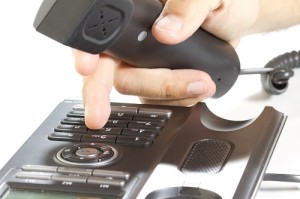How much attention do you pay to the greeting when transferred to voicemail? Often times, small business voicemail messages are outdated or so generic that listeners tune out until they hear the beep. You can change the impression that your voicemail recording leaves on your callers by following these steps:
- Clearly identify yourself and your company. Callers are more likely to leave messages when they know they’ve reached the right person. Don’t worry about stating your phone number, however. Your caller is unlikely to recognize it due to the efficiency of modern technology and it takes up valuable time unnecessarily.
- Update your voicemail greeting frequently. Many messages simply state the person reached, company name, and a statement about being away from the desk or unable to answer. The caller knows this as soon as they reach your voicemail. So, instead of stating the obvious, enhance your message with information the caller can use, such as how to reach someone immediately or when you will be returning calls.
- Specify what information you’d like the caller to leave on their message to you. This might include account number or best times to return their call.
- Write it out and practice. It may seem silly, but you’ll save yourself time if you write down what you want to say in your message. By thinking it through in its entirety, you’ll be far less likely to omit needed information. Rehearse before you record to ensure that the script flows smoothly. Practice in a quiet space and remember to smile. You’ll want to be in a good mood so that you sound welcoming to callers. It’s also important to practice using the various phone prompts associated with recording messages. Knowing the functionality about which buttons to press, such as [*] to start recording and [#] to pause, is also important.
- Speak clearly and be aware of the background noises. Many callers will be using their cell phones and sometimes reception can be spotty. Make sure that your outgoing greeting is clear, concise, and recorded at a reasonable pace. In most cases, it’s probably best to not include background music. Watch out for ambient noise as well – train signals, traffic, or outside conversations can be very distracting to the caller.
- Provide the expected beep. Give callers the beep they are anticipating as soon as possible after your recorded greeting. Don’t leave big gaps, giving the customer time to wonder if they’re still connected or the opportunity to hang-up because they didn’t hear the expected tone.
- Check your greeting. After you complete your outgoing voicemail message, play it back to verify that you said what you intended to say. Make sure that it matches the professional expectations of your organization. Go one step further and dial in as a customer would do. Pay attention to the entire process and make sure there is a smooth transition to voicemail.
Wondering what this improved voicemail message would say? Here’s one example:
“Hi, this is George at Company Name. I am travelling today but will be checking voicemail regularly. I will be able to return calls between 5-7p.m., eastern standard time. If you need immediate assistance, please press zero to be transferred to the office manager. I can also be reached at [email protected], and will be responding throughout the day. Thanks for calling!”
Do you have more tips to share for small business voicemail greetings? Please do so in the comment section below.
